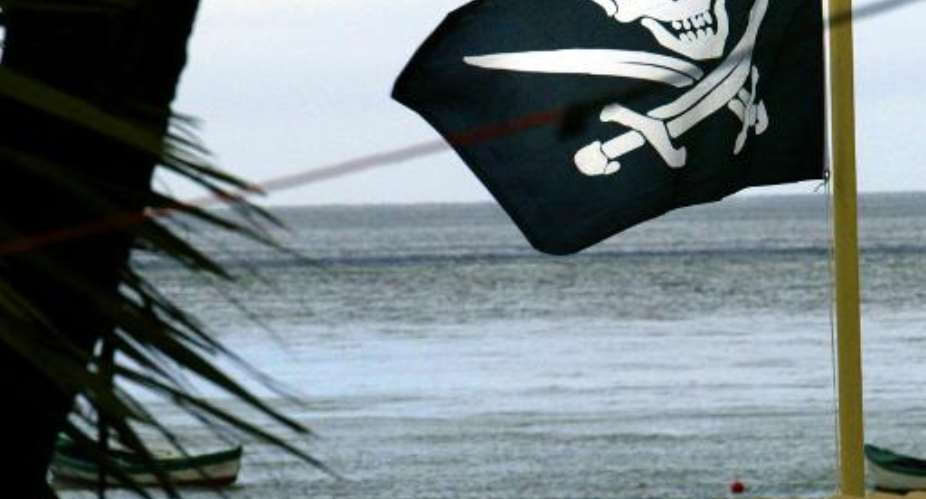Antananarivo (AFP) - Documentary makers following the marine archaeologists who say they found 17th-century pirate William Kidd's sunken ship defended the team's work on Wednesday after a UNESCO report dismissed their claims.
US explorer Barry Clifford declared in May that he had located the wreck of Kidd's legendary "Adventure Galley" ship -- and a 50-kilogramme (110-pound) silver ingot of plunder -- off the coast of Madagascar.
"All the work was carried out by a team of experienced underwater explorers lead by a respected marine archaeologist," October Films, which is documenting Clifford's treasure hunt, said in a statement.
"(The report) contains a number of points which we will examine and respond to in due time."
UNESCO, the UN's scientific and educational arm, flew experts to the site in the Indian Ocean to investigate Clifford's claims, and issued a damning report on Tuesday.
It said the "silver" ingot was just a lead weight, and that the supposed shipwreck was rubble from old port construction.
The notorious Captain Kidd, who was born in Scotland in about 1645, was first employed by British authorities to hunt pirates, before he himself turned into a ruthless criminal of the high seas.
The fate of much of his booty has remained a mystery, sparking intrigue and excitement for generations of treasure-hunters.
"The exploration and filming of the site at Ile St Marie in 2015 was planned and carried out with the extensive cooperation of the relevant Malagasy agencies, who oversaw the entire expedition," October Films said.
- Lost loot mystery -
Clifford garnered world headlines when he unveiled the "silver ingot" -- supposedly part of Kidd's ill-gotten gains -- at an event attended by Madagascan President Hery Rajaonarimampianina and the US and British ambassadors.
But Michel L'Hour, head of the UNESCO team, was less impressed.
"How can anyone just get out of the water and say, 'I've found Captain Kidd's treasure'?" he told AFP.
This is the second time UNESCO has clashed with Clifford.
Last year, he claimed he had identified the wreck of Christopher Columbus's flagship that sank in 1492 off the northern coast of Haiti.
The claim was soon disproved by UNESCO, which determined it was a ship from a later period.
Sam Brown, one of the producers involved with the documentary, called UNESCO's report on the Haiti wreck a "disgrace" and said the UN body was motivated by its opposition to privately-funded research.
"UNESCO will attempt to discredit Barry Clifford by whatever means they can," Brown said in an email to AFP last week.
Brown expressed surprise that the ingot found off Madagascar in May was made of lead as Clifford was "100 percent convinced it was silver".
"Maps and primary source documents clearly state that Captain Kidd scuttled his ship in this area," said Brown, who was speaking in a personal capacity.
"The extensive geophysical survey... identified 13 shipwrecks in total, but only this one fits the profile of the Adventure Galley."
Clifford is best known as the discoverer and excavator of the world's first fully verified pirate shipwreck, the Whydah, in 1984.





 Akufo-Addo spotted ordering chiefs to stand for his handshake
Akufo-Addo spotted ordering chiefs to stand for his handshake
 Akufo-Addo ‘disrespects’ every chief in Ghana except Okyenhene — NDC Communicato...
Akufo-Addo ‘disrespects’ every chief in Ghana except Okyenhene — NDC Communicato...
 Supreme Court clears way for dual citizens to hold key public positions
Supreme Court clears way for dual citizens to hold key public positions
 Be transparent, don’t suppress the truth – Prof. Opoku-Agyemang to Jean Mensa
Be transparent, don’t suppress the truth – Prof. Opoku-Agyemang to Jean Mensa
 ‘I won’t tell the world I was only a driver’s mate during challenges’ – Prof Jan...
‘I won’t tell the world I was only a driver’s mate during challenges’ – Prof Jan...
 We’ll prosecute corrupt officials of Akufo-Addo’s govt – Prof Jane Naana
We’ll prosecute corrupt officials of Akufo-Addo’s govt – Prof Jane Naana
 [Full text] Acceptance speech by Prof Jane Naana Opoku-Agyemang as 2024 NDC Runn...
[Full text] Acceptance speech by Prof Jane Naana Opoku-Agyemang as 2024 NDC Runn...
 Election 2024: Don’t be complacent, we haven’t won yet – Asiedu Nketia cautions ...
Election 2024: Don’t be complacent, we haven’t won yet – Asiedu Nketia cautions ...
 Election 2024: Stop fighting over positions in Mahama’s next govt – Asiedu Nketi...
Election 2024: Stop fighting over positions in Mahama’s next govt – Asiedu Nketi...
 Prof Jane Naana Opoku-Agyemang will restore dignity of vice presidency – Fifi Kw...
Prof Jane Naana Opoku-Agyemang will restore dignity of vice presidency – Fifi Kw...
